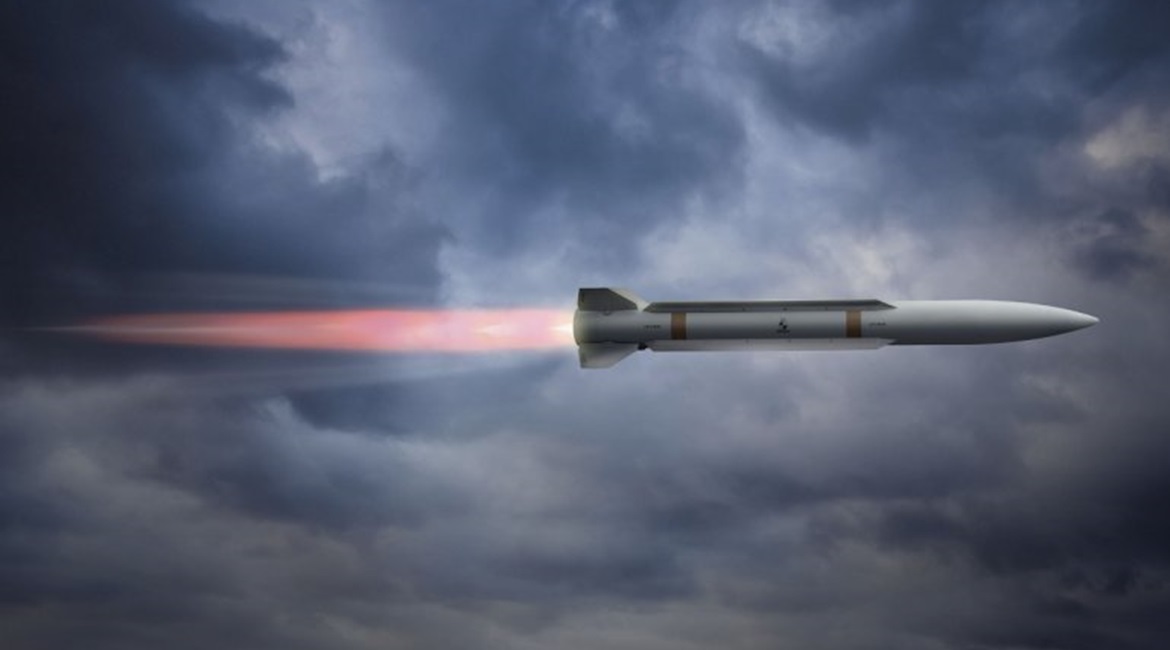
Raytheon has disclosed details of the development of a new, compact supersonic medium-range air-to-air missile (AAM) that, it says, is faster and more manoeuvrable than legacy medium-range AAMs.
Primarily an internally-funded initiative, Peregrine is being developed as a day/night all-weather high-load out effector to address future air dominance threats, including unmanned air systems, manned aircraft and cruise missiles.
“Peregrine is able to capitalise on the range and autonomous search capability of the [AIM-120 Advanced Medium-Range Air-to-Air Missile radar-guided] AMRAAM and the manoeuvrability of our AIM-9X Sidewinder [short-range imaging infrared homing AAM]. Mark Noyes, Business Development Executive, Air Warfare Systems, at Raytheon Missile Systems told Jane’s . However, we see Peregrine as complementary to, and not replacing, that portfolio of air dominance effectors, to keep it relevant for decades to come.”

Computer-generated image of Raytheon’s developmental Peregrine medium-range air-to-air missile (Raytheon)
Raytheon describes Peregrine as approximately 6ft [182.9 cm] in length (which is roughly half the length of AMRAAM), a little over 150 lb [68 kg] in weight, and furnished with a blast fragmentation warhead, an advanced, miniaturised ‘multi-mode autonomous seeker’ and ‘advanced solid rocket propulsion,’ packaged in a lightweight, compact airframe.
However, the company is notably restrained in disclosing specific details of the missile, including its diameter, the composition of the multi-mode seeker, the specific technology and provenance of the propulsion system, and how Peregrine delivers ‘greater range and effect’ in an airframe that is half the size of AMRAAM.
Looking to read the full article?
Gain unlimited access to Janes news and more...






